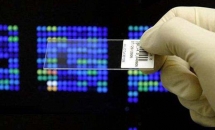Over the past decade, we have witnessed a dizzying increase in the number of organism genomes that have been sequenced in their entirety. With the emergence of more powerful DNA sequencing techniques and instruments, the possibility of being able to "read" all of an individual's genetic information may, in just a few years, go from something out of science-fiction to routine laboratory practice. However, the real impact of these mountains of data on the way we understand basic biological processes, and more directly on biomedicine, has been and continues to be fairly limited. In this lecture, the speaker will begin by examining some of the shortcomings of these automatic sequencing projects; generally speaking, our inability to exploit the accumulated data is a result of the following problem: while the information coded in the DNA can be "translated" in a superficial way to the sequence of amino acids of a protein according to a linear code (the genetic code), it is the three-dimensional structure (3-D) of the protein that determines its biological functions. The presentation will continue with a brief explanation of the elements that are hampering the establishing of this "second genetic code" (how to go from sequencing amino acids to the 3-D structure), and will then go on to discuss the current state of algorithms for predicting 3-D structures in proteins, as well as their complexes. The presentation will close with a few examples of how knowledge of the 3-D structure of specific proteins has proved essential for understanding the molecular basis of different illnesses.
Cycle: Challenges of the 21St Century the Voice of Medicine, III
Organized by: Residence for Researchers. THEY CALLABORATE:Fundació Clínic Barcelona, IDIBAPS, RESA and Col·legi Oficial de Metges de Barcelona
